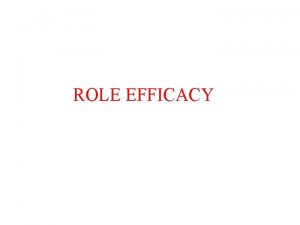Efficacy of single dose versus repeated dose of

- Slides: 1

Efficacy of single dose versus repeated dose of albendazole to treat Ascaris lumbricoides, Trichuris trichiura and Hookworm: A randomized controlled assessor-blinded clinical trial A A Adegnika, 1, 2, 3 J F Zinsou 1, S Issifou 1, 2 , U Ateba-Ngoa 1, 2, 3, FR Kassa-Kassa 1, E Ngoune Feugap 1, YJ Honkpehedji 1, JC Dejon Agobe 1 , H Moudounga Kenguele 1 , M Massinga-Loembe 1, ST Agnandji 1, 2, B Mordmüller 2, M Ramharter 4, M Yazdanbakhsh 3 , PG. Kremsner 1, 2, B Lell 1, 2 • 1 Centre de Recherches Médicales de Lambaréné (CERMEL), BP. 118, Lambaréné, Gabon; 2 Institut für Tropenmedizin, Universität Tübingen, Germany; 3 Leiden Medical University Center, Department of Parasitology, Leiden, The Netherlands; 4 Department of Medicine I, Division of Infectious Diseases and Tropical Medicine, Medical University of Vienna, Austria Background: • Results: Objectives: To assess the effect of treatment duration with albendazole against Four hundred and thirty six children were screened and 175 were randomized and received the study drug. An adequate cure rate and egg reduction above 85% was found with a single dose for Ascaris 85%; [95%CI: 7396%] hookworm 54% [78 -100%] and Trichuris 40% [73 - 93%]. Soil-transmitted helminths affect more than two billion people worldwide (1, 2). They are widely endemic in the tropics and are prevalent mostly in preschool and school aged children (3, 4) as well as in pregnant women (5). Its control is limited to a mass education and drugs administration using often a single dose albendazole 400 mg. This drug has proven to be safe with a best compliance, compared to mebendazole given in three consecutive days. There is little data on efficacy of the standard single dose administration compared to alternative regimens. A. lumbricoides, T. trichiura, and hookworm and to compare a one to a two and a three-day regimen of albendazole to treat infested school children • Table 1: Cure rates Methods: We conducted a randomized, controlled, assessor-blinded clinical trial to determine the efficacy of standard and extended albendazole treatment against soil-transmitted helminth infection in Gabon. School aged children residing in Lambarene, Gabon which is endemic for STH. Children aged between 4 to 14 years ; presence of at least 5 eggs or larvae of any of the three intestinal helminths, namely Ascaris lumbricoides, Trichuris trichiura and hookworm. The study protocol was approved by the Comité d’Ethique Independent de Lambaréné, and the trial is registered with Clinical. Trials. gov number NCT 01192802. Children provided stool samples which were examined using the Kato-Katz technique and copro-culture using a modified agar protocol to detect larvae of hookworms. Two independent laboratory technicians read slides separately The two readers were blinded to the assigned drug regimen. Outcome was assessed six weeks after the treatment. Discussion: We find a somewhat lower cure rate and eggs reduction rate of single albendazole treatment against A. lumbricoides (85%) and hookworm (54%) compared to recent reports from other regions of Africa including from Cameroun, Ethiopia and Tanzania, with cure rates ranging from 93 to 99% and from 69 to 93% (34 -36), respectively. The single dose cure rate for T. tric hiura in our study is similar to those of numerous reports from diverse geographical areas (range: 8 – 36%) and to the 47 % cure rate found in a meta-analysis based on data from seven countries (6). The three-dose regimen of albendazole led to a considerable increase in the cure rate against these three helminth species compared to one- or two-dose regimens. This is in accordance with a recent report from China (7) showing the necessity for triple-dose regimens of albendazole to achieve sufficiently high cure rates. Our main limitation is due to the techniques of helminth detection using one stool sample and one detection technique to determine cure and eggs reduction, this could lead to an overestimation of cure rates or eggs reduction in our study. Conclusion: Our finding shows the necessity of multiple doses of albendazole to reach an adequately high cure rate against the three major geohelminths. While a single dose may be enough to cure Ascaris, the efficacy against Trichuris and hookworm is not good enough. A single dose albendazole considerably reduces Ascaris, but has only a moderate effect on hookworm and Trichuris. This may still be the preffered option balancing efficacy, safety, compliance during mass drug administration and positive effects of low-level helminths infections. • Table 2: Eggs counts reduction References 1. 2. 3. 4. 5. 6. 7. Savioli, L. and M. Albonico. 2004. Nat. Rev. Microbiol. 2: 618 -619. Hotez, P. J. , et al. 2007. Control of neglected tropical diseases. N. Engl. J. Med. 357: 1018 -1027. Albonico, M. , H. et al. . 2008. Controlling soil-transmitted helminthiasis in pre-school-age children through preventive chemotherapy. PLo. S. Negl. Trop. Dis. Mbuh, J. et al. . 2012. The epidemiology of soil-transmitted helminth and protozoan infections in south-west Cameroon. J. Helminthol. 86: 30 -37. Adegnika, A et al. . 2007. Increased prevalence of intestinal helminth infection during pregnancy in a Sub-Saharan African community. Wien. Klin. Wochenschr. 119: 712 -716. Vercruysse, J. , et al. . 2011. Assessment of the anthelmintic efficacy of albendazole in school children in seven countries where soil-transmitted helminths are endemic. PLo. S. Negl. Trop. Dis. 5: e 948 Steinmann, P. , J. et al. 2011. Efficacy of single-dose and triple-dose albendazole and mebendazole against soiltransmitted helminths and Taenia spp. : a randomized controlled trial. PLo. S. One. 6: e 25003

